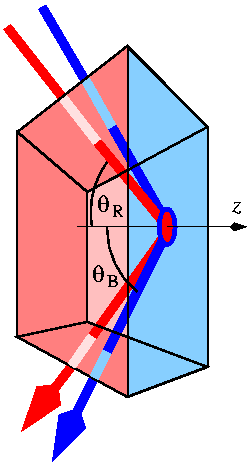Semi-classical physics, such as the Jeffreys-Wentzel-Kramers-Brillouin
(JWKB or WKB) approximation, allows one to capture some of wave nature
of particles. These approaches are usually restricted to cases where
the interaction potential changes slowly over a distance comparable
to the wavelength λ associated with the particle.

Research in our group focuses on ways to apply the WKB approximation
in extreme quantum regimes where it usually should not be valid.
For example, by comparing the WKB and quantum probabilities
for particles to get close to each other, we proposed a very
useful concept: quantum suppression. At ultra-low energies,
atoms/molecules approaches each other with a suppressed probability.
Another manifestations of extreme quantum behaviors are phenomena
such as quantum reflection and tunneling. In our group, we
investigate how an atom approaching a wall can actually be reflected
before reaching it. This strange behavior, named quantum
reflection, is due to "above barrier reflection", the reciprocal
of tunneling which allow a particle to go through a barrier
eventhough it is classically forbidden. Basically, once the particle
goes through the "badlands" (a region where WKB fails), it starts
to be "reflected". We have studied these phenomena for
scenarios other than atom-wall interactions (e.g., atom-ion, atom-atom,
molecule-wall), including the effect of retardation arising
from the finite value of the speed of light.
We are continuing this avenue of research, identifying ways to
enhance extreme quantum behaviors, by using tools such as
bi-chromatic prism (see image) creating sharply changing interaction
potentials between a wall and an atom. We also explore ways to
use our understanding of quantum reflection and apply it to
ultracold physics and chemistry, such as ultracold chemical reactions.